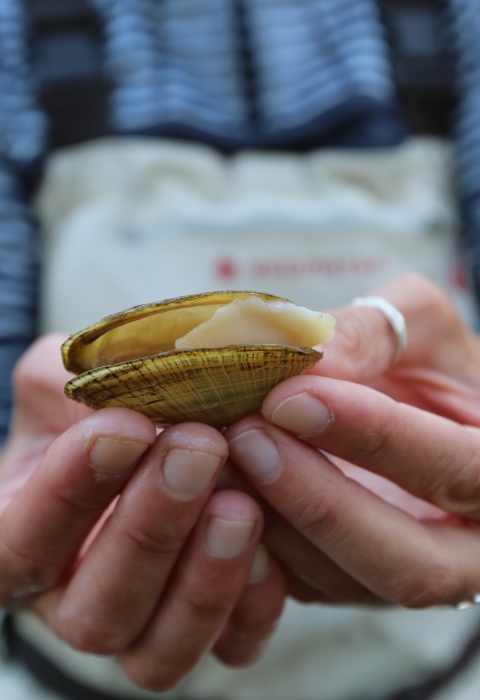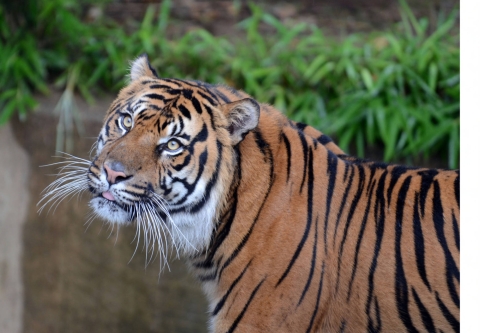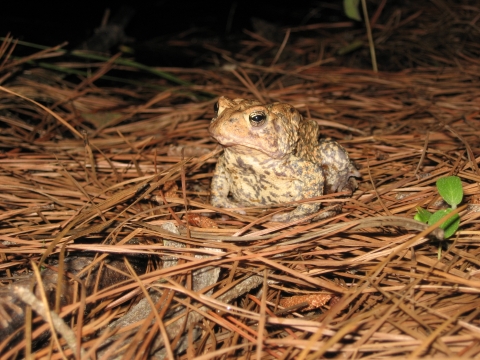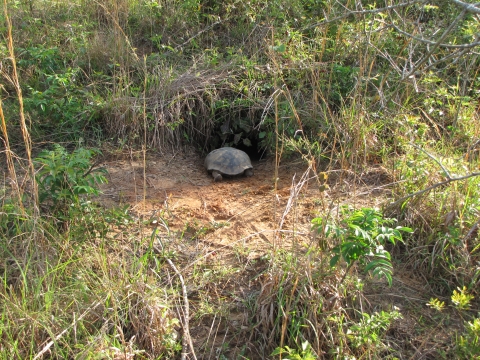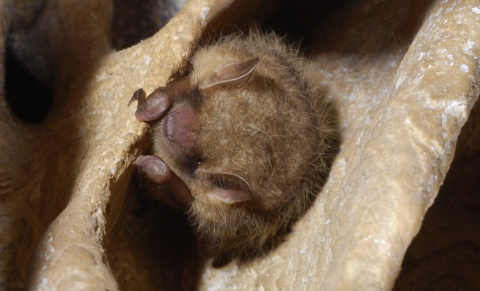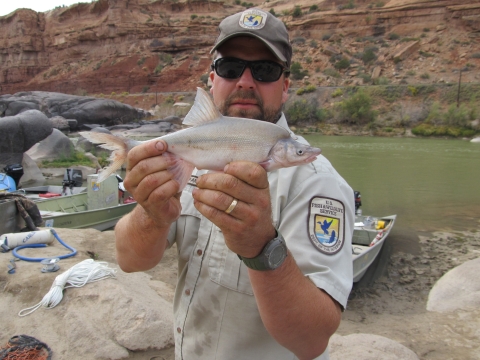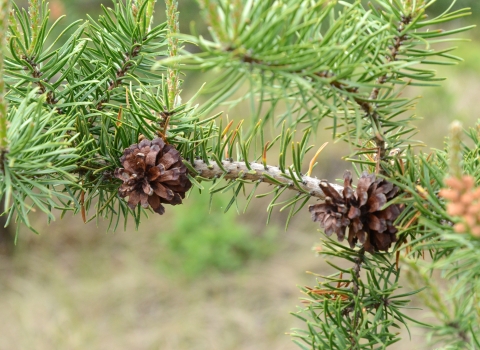Polar bears, tigers, pandas, and sea turtles are the stars of commercials, zoos, and documentaries. It’s not hard to understand why these endangered species have such large fan clubs. Big, fluffy, or boldly patterned, these critters are charismatic advocates for protecting endangered species.
But what about the little guys: the creepy crawlers, water-dwellers, and underground-toilers? Though they may not play the heart strings like a big cat or fuzzy bear, endangered species from all walks of life must be protected from extinction not only because of their innate value as living beings on this planet, but for their potential to benefit human health, the environment, and the economy.
Human health
Approximately 11 percent of the 252 drugs considered basic and essential by the World Health Organization are exclusively derived from flowers. According to the U.S. Department of Agriculture, 20 percent of the best-selling prescription drugs in the United States are derived from plants. In most cases, the value of these plants and animals are not realized until they are in danger.
The rosy periwinkle, for example, a flower native to Madagascar, was on the brink of extinction when its medicinal purposes were discovered. From this flower, scientists have derived a cancer-fighting prescription that has increased the survival rate for childhood leukemia from 20 percent to 80 percent.
Plants aren’t the only ones improving and saving lives.
It’s common knowledge that bees are essential for pollination, but did you know that their honey has been used for centuries as an anti-inflammatory and anti-bacterial agent? Most recently however, studies have been conducted on the use of bee venom in modern medicine. The venom that makes a bee’s sting painful has been used as a complementary and alternative medicine for diseases like Parkinson’s, Alzheimer’s, and even cancer.
Although the honeybee may not be in danger of extinction, many of its counterparts are. Scientists estimate that globally one in six bee species are regionally extinct and more than 40 percent are at risk of extinction. Across the United States, bumble bees are in decline including the yellow-banded bumble bee, lemon cuckoo bumble bee, American bumble bee, and the endangered rusty-patched bumble bee.
To protect itself from predators, the Houston toad -- found exclusively in southeast Texas – secretes foul tasting chemicals from its pores. These same chemicals, including serotonin and alkaloids, are now used to treat nervous system disorders and heart disease. Unfortunately, Houston toads are endangered, due, in part, to habitat loss, as well as an invasive fire ant that kills their young.
In protecting these species, we protect humanity. There’s no way to know what cures will be derived from or inspired by critters across the world. Medical miracles are not the only way plants and animals improve human health. Those who live in environments with a diversity of plants and animals are less prone to allergies and autoimmune diseases.
Ecology
The benefits don’t stop there! Freshwater mussels filter bacteria, algae, and pollution from local waterways. In doing so, they absorb these contaminants into their bodies. They work as not only cleaning agents, but indicator species. If mussels are healthy, water is healthy. If mussels are declining, it could mean the water has a high level of pollutants.
Water quality deterioration and habitat fragmentation have reduced freshwater mussel populations so dramatically they are now considered some of the most endangered species in the United States. In 2021, eight species of freshwater mussel were declared extinct by the U.S. Fish and Wildlife Service including the stirrupshell mussel, the yellow-blossom pearly mussel, and the southern acornshell mussel. Their absence is a red flag for the health of our rivers and streams.
Each species, regardless of size or spread, plays a role in the delicate balance of our environment. The absence of one species can cause a catastrophic series of extinctions. Given the limits of science and knowledge, it is often impossible to understand the role of a species in an ecosystem until it is gone.
For example, without the gopher tortoise, listed as threatened under the Endangered Species Act (ESA), 350 species, including burrowing owls, eastern cottontail rabbits, eastern indigo snakes, and invertebrates, would have insufficient shelter. The burrows of the gopher tortoises are borrowed as much-needed refuge from predators.
Economy
Predators have their own important roles to play. Species like wasps and bats support plants by not only pollinating flowers but consuming pests that destroy crops. Bats save U.S. agriculture an estimated $3 billion per year in pest control. This valuable service is dwindling. Fifteen bat species are listed as federally endangered, threatened, or under review, and that number continues to grow.
The true value of a species is incalculable, but with careful tracking, we can break down its direct economic contribution. Consider the federally threatened Pecos sunflower, found in the desert wetlands of Texas and New Mexico. Soil salinity, one of the harsh conditions crops combat today, is likely to increase globally due to climate change climate change
Climate change includes both global warming driven by human-induced emissions of greenhouse gases and the resulting large-scale shifts in weather patterns. Though there have been previous periods of climatic change, since the mid-20th century humans have had an unprecedented impact on Earth's climate system and caused change on a global scale.
Learn more about climate change . This flower’s resistance to salt saturation may allow the continued harvest of sunflower seeds for use in livestock feed, snack food, and wild bird seed, a U.S. industry with an estimated value of $594 million.
The inspiration these species contribute to artists, engineers, and entrepreneurs is truly priceless. Without the influence of nature, we wouldn’t have inventions like robotic arms, bullet trains, and even Velcro.
Fireflies are studied to make LED lights more efficient. Spider webs are helping scientists develop bird-collision proof glass. Cicadas' wings may hold the secret to bacteria-repellent surfaces. For every wonder discovered, millions more have yet to be unearthed, and may be hidden in threatened or endangered species.
For example, the humpback chub, listed as threated under the ESA, lives in the harsh conditions of the deep canyons carved by the Colorado River. This hardy fish is named for its signature hump, but scientists have yet to determine the hump’s purpose. Imagine, after years of study, this fish may provide essential information on how to navigate unruly currents. The resulting technology could perhaps improve the fuel efficiency of boats, motor vehicles, and air crafts.
The possibilities are endless!
According to a study published by PLOS Biology in 2011, of an estimated 8.7 million species on earth, more than 86 percent of those on land and 91 percent of ocean dwellers have yet to be discovered.
There’s no time to waste. Habitat degradation, human interference, and climate change threaten all species. It is our responsibility to protect these plants and animals from extinction not simply because of the benefits they provide us but because of our role in their decline.
Extinction is often likened to ripping pages out of a book that has yet to be read. We don’t yet know the human health, ecological, or economic value of every plant or animal – but if we protect and recover those that face extinction, we may one day have the opportunity to read those pages.
To learn more about all we do to protect endangered species visit our Endangered Species Page.
